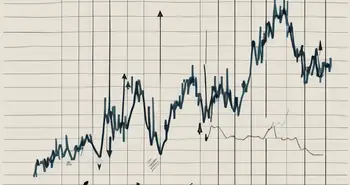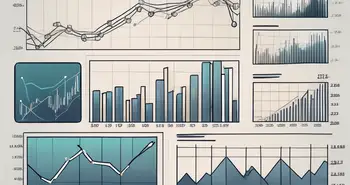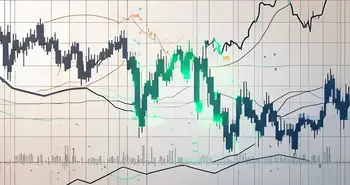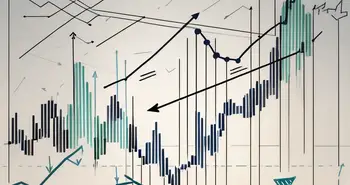Understanding Pivot Points in Forex

Welcome to my comprehensive guide on understanding pivot points in forex trading. In this article, I will break down the concept of pivot points, explain their significance in forex trading, explore the mathematics behind calculating them, discuss different types of pivot points, and show you how to incorporate them into your trading strategy. We will also explore the advantages and disadvantages of using pivot points in your trading decisions. So, let's dive in and unlock the power of pivot points in the forex market!
Introduction to Pivot Points
In order to master pivot points, it is crucial to understand the concept behind them. Pivot points are popular technical indicators used by forex traders to identify potential support and resistance levels. These key levels play a vital role in determining market sentiment and can help traders make informed decisions.
As an expert forex trader, I have found that pivot points provide valuable insights into market trends and can be an excellent tool for both experienced and novice traders alike. They highlight important price levels and assist in analyzing market dynamics.
The Concept of Pivot Points
To put it simply, pivot points are calculated based on the previous day's high, low, and closing price. The formula takes into account these values to determine potential future levels at which the price may reverse or consolidate.
For instance, the most commonly used pivot point, known as the “main pivot point,” is calculated by adding the previous day's high, low, and closing prices and dividing the sum by three. This calculation provides a reference point for the current trading day.
Importance of Pivot Points in Forex Trading
The significance of pivot points lies in their ability to serve as reliable indicators of market sentiment. They act as support and resistance levels, helping traders identify potential entry and exit points. By observing how prices react to these levels, traders can make more informed decisions.
For example, if the price breaks above a resistance level, it may indicate a bullish market sentiment, while a break below a support level may signify a bearish sentiment. Understanding these dynamics is crucial for successful trading.
Personally, pivot points have helped me gain an edge in my trading strategy by providing clear reference points for price action. They have allowed me to better analyze market trends and make informed decisions when entering or exiting trades.
The Mathematics Behind Pivot Points
To fully grasp pivot points, it's essential to understand the mathematics involved in their calculation. Let's explore the formula for calculating pivot points and delve into the concept of resistance and support levels.
Calculating Pivot Points
The calculation of pivot points involves a few mathematical steps. The formula varies slightly depending on the type of pivot point used, but the most commonly used calculation is as follows:
- Add the previous day's high, low, and closing prices.
- Divide the sum by three to obtain the main pivot point.
- Calculate the first level of resistance and support by multiplying the main pivot point by 2 and subtracting the previous day's low for support, or adding the previous day's high for resistance.
- Continue this calculation for additional levels of resistance and support.
By applying this formula, traders can determine key price levels and gauge potential market movements.
Understanding Resistance and Support Levels
Resistance and support levels are instrumental in interpreting pivot point calculations. Resistance levels are price levels at which the market has historically struggled to surpass, while support levels are price levels at which the market has previously found stability.
For example, if the price approaches a resistance level calculated using pivot points, it could indicate a potential reversal or consolidation. Conversely, if the price nears a support level, it may suggest a bounce or a trend continuation.
Understanding these levels and how they interact with pivot points is vital for successful trading. By combining technical analysis with pivot points, traders can identify potential areas of price reversals or breakouts.
Types of Pivot Points
There are several different types of pivot points used in forex trading. Let's explore some of the most popular ones:
Standard Pivot Points
Standard pivot points are calculated using the formula mentioned earlier, which takes into account the previous day's high, low, and closing prices. These pivot points provide a solid foundation for analyzing market trends and can be an excellent starting point for traders.
Fibonacci Pivot Points
Fibonacci pivot points are based on the Fibonacci sequence, a mathematical sequence in which each number is the sum of the two preceding ones. These pivot points are calculated using ratios derived from the Fibonacci sequence and provide additional levels of support and resistance.
As an expert trader, I have found Fibonacci pivot points to be particularly useful during periods of market volatility. They offer additional insights into potential price levels based on the Fibonacci ratios, which can help traders make more accurate predictions.
Demark Pivot Points
Demark pivot points, developed by market analyst Tom Demark, differ from the traditional pivot point calculation. They take into account the relationship between the open and close prices, as well as the high and low prices. These pivot points are useful for identifying potential price reversals and trend changes.
As an experienced trader, I have found that incorporating Demark pivot points into my analysis provides me with a more comprehensive view of market dynamics. It allows me to identify critical levels where price action may shift, helping me make better-informed trading decisions.
Incorporating Pivot Points into Your Trading Strategy
Now that we understand the concept of pivot points and the different types available, let's explore how to incorporate them into your forex trading strategy effectively.
Timing Trades with Pivot Points
Pivot points can be highly effective in timing trades. By observing price action around pivot points, traders can identify potential entry and exit points. For example, if the price breaks above a resistance level calculated using pivot points, it could signal a buying opportunity. On the other hand, a break below a support level may indicate a selling opportunity.
Personally, I always consider pivot points when timing my trades. They have served as reliable indicators of market sentiment, allowing me to enter trades at opportune moments and maximize my profit potential.
Risk Management and Pivot Points
Risk management is a crucial aspect of successful trading, and pivot points can play a role in this area too. By setting stop-loss orders below support levels or above resistance levels, traders can limit their potential losses if the market moves against them.
Moreover, pivot points can also be used to set profit targets. Traders can take profits or adjust their positions as the price approaches resistance or support levels. This approach allows traders to protect their profits and make informed decisions based on potential price actions at these levels.
As an expert trader, I always emphasize the importance of risk management, and pivot points have become an integral part of my strategy. They provide clear guidance on where to set stop-loss orders and take-profit levels, allowing me to manage my risk effectively.
Advantages and Disadvantages of Using Pivot Points
While pivot points offer valuable insights into the forex market, it's important to consider both their advantages and disadvantages as part of a comprehensive trading strategy.
Benefits of Pivot Points in Forex Trading
Pivot points have a multitude of benefits for forex traders:
- They provide clear reference points for support and resistance levels.
- They help identify potential entry and exit points.
- They offer insights into market sentiment.
- They assist in analyzing price action and market trends.
- They provide risk management opportunities.
By incorporating pivot points into your trading strategy, you can significantly enhance your decision-making process and increase your chances of success.
Potential Drawbacks and Limitations
While pivot points are powerful tools, they may not be suitable for every trader or every market condition:
- Pivot points should not be used as standalone indicators but rather as part of a comprehensive trading strategy.
- They are most effective when combined with other technical analysis tools and indicators.
- During periods of low volatility, pivot points may not provide meaningful insights.
- Market participants' behavior can sometimes deviate from the expected reactions to pivot points.
Like any trading tool, pivot points have their limitations. It is important to constantly evaluate and adapt your strategy based on market conditions.
FAQ
Let's quickly revisit the main points and address frequently asked questions about pivot points:
Q: What are pivot points?
Pivot points are technical indicators used in forex trading to identify levels of potential support and resistance.
Q: How are pivot points calculated?
Pivot points are calculated based on the previous day's high, low, and closing prices using a specific formula dependent on the type of pivot point being calculated.
Q: How can pivot points be used to time trades?
By observing price action around pivot points, traders can identify potential entry and exit points based on breaks above resistance or below support levels.
Q: Are pivot points suitable for all market conditions?
Pivot points are most effective during periods of market volatility but may not provide meaningful insights during times of low volatility.
Q: How can pivot points aid in risk management?
Pivot points can serve as reference points for placing stop-loss orders and setting profit targets, helping traders manage their risk effectively.
In conclusion, pivot points are powerful tools in forex trading that can provide valuable insights into market dynamics and assist in making informed trading decisions. By incorporating pivot points into your trading strategy, you can gain a competitive edge and enhance your overall trading performance. Always remember to use pivot points in conjunction with other technical analysis tools and indicators, adapt your strategy based on market conditions, and practice effective risk management. Happy trading!
Ready to elevate your forex trading with the insights from pivot points? Embrace the future of trading with Morpher, the revolutionary platform that combines the power of blockchain technology with zero fees, infinite liquidity, and the flexibility of fractional investing. Whether you're looking to trade forex, stocks, cryptocurrencies, or even unique markets, Morpher offers you the tools to maximize your strategies, including up to 10x leverage and the safety of a non-custodial wallet. Sign Up and Get Your Free Sign Up Bonus today to transform your trading experience with Morpher's innovative platform.

Disclaimer: All investments involve risk, and the past performance of a security, industry, sector, market, financial product, trading strategy, or individual’s trading does not guarantee future results or returns. Investors are fully responsible for any investment decisions they make. Such decisions should be based solely on an evaluation of their financial circumstances, investment objectives, risk tolerance, and liquidity needs. This post does not constitute investment advice.

Painless trading for everyone
Hundreds of markets all in one place - Apple, Bitcoin, Gold, Watches, NFTs, Sneakers and so much more.

Painless trading for everyone
Hundreds of markets all in one place - Apple, Bitcoin, Gold, Watches, NFTs, Sneakers and so much more.









